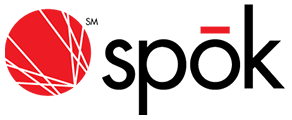Blog
4 ways clinical communication technology supports safer care and Joint Commission compliance
Effective communication isn’t just a best practice; it’s a priority for The Joint Commission accreditation and other certifying organizations.
The Joint Commission patient safety goals are an essential guideline for delivering exceptional patient experiences. However, meeting these standards often becomes complex and challenging.
From clunky workflows to fragmented systems, many hospitals and health systems struggle to share critical information quickly and clearly with the right team members. To address these communication breakdowns, consider these four examples of how clinical communication technology can help deliver safer care, enhance care team collaboration, and improve Joint Commission compliance.
1. Exchanging actionable information

Modern technology delivers time-sensitive alerts and messages about patient updates, changes in vitals, and test results without interruptions. More specifically, critical test result notification (CTRN) solutions automate manual processes between radiologists and other care team providers involved in ordering and receiving results.
This capability empowers providers to follow The Joint Commission accreditation standards, such as NPSG.02.03.01 which reads: “Report critical results of tests and diagnostic procedures on a timely basis.”
When an abnormal radiology test result is flagged, an alert is immediately sent via SMS to the responsible provider’s cell phone. If there isn’t a timely response, CTRN follows The Joint Commission patient safety goals by escalating the alert notification to other responsible providers that may be on-call.
This closed-loop communication solution also creates a complete audit trail with traceability, accountability, and extensive proof of Joint Commission compliance.
2. Connecting with on-call clinicians
One of the underlying goals of The Joint Commission standards is to “improve the effectiveness of communication among caregivers.” This is especially relevant as clinicians use mobile devices to exchange patient information with their colleagues and care teams to organize treatment plans.
Doctors and nurses might be looking for a specific person. Sometimes, they might require the expertise of somebody in a rotating position, such as an admitting hospitalist or a cardiologist on call. Without access to up-to-date information concerning their availability, your clinicians waste time locating the right medical professional.
Integrated with an enterprise directory and accurate on-call scheduling, secure messaging solutions prevent these communication delays. Your care teams can then coordinate patient care faster, improving Joint Commission compliance.

3. Providing support for mobile devices
Healthcare workers use many communication devices, like Wi-Fi phones, smartphones, tablets, and pagers, that could depend on their role.
If they’re sending protected health information (PHI) or need access to certain applications, you need an underlying communication backbone to bring these devices together and help your employees find the right provider quickly. This is where your mobile device management (MDM) solution comes in.
Integrating your MDM solution with a secure message platform that complies with HIPAA and The Joint Commission accreditation standards guarantees that messages containing PHI are encrypted, delivered to the correct person, and only accessible on authorized devices across your healthcare organization.
With this dynamic communication across their roles, care teams can more effectively coordinate treatment plans. At the same time, your MDM solution ensures these devices meet organizational and regulatory security standards. Together, they form a unified, secure communication ecosystem that supports more effective clinical workflows.

4. Empowering rapid response teams to act fast
Improving Joint Commission compliance requires an optimized process for rapid response teams during significant health events, such as an elevated MEWS (modified early warning system) score for sepsis.
Sending alerts to staff members after initiating a code is just the first step, and starting a manual calling tree process is simply inefficient. Adherence to The Joint Commission standards includes the ability to monitor emergencies as they unfold—ensuring swift delivery of all codes, alerts, and messages to the relevant medical professionals.
If the initial responder does not acknowledge an alert, your system should automatically escalate the code to the next available clinician. Real-time tracking and reporting allow for human oversight and create documents that support post-incident analysis and continuous process improvement.

Modern technology is essential for significantly improving communication among hospital teams and supporting your organization to meet The Joint Commission patient safety goals. By enabling your employees to share timely, actionable information with the right caregivers, you can change patient experiences for the better.
Editor’s note: This post was originally published in October 2017 and has been updated for relevancy and accuracy.






